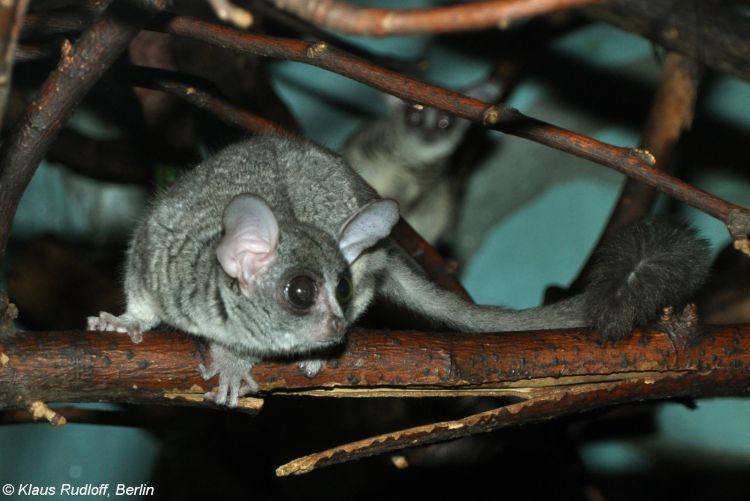Who do I interact with?
Now that you know about reproduction, it is important to
learn what other interactions the bush baby takes part in! G. senegalensis are usually omnivores in nature. They feed on
little prey, fruits and some insects in which they use their large
ears to detect them by sound. This results to the bush babies
having a well balanced diet according to season. They are not
known to exhibit any kind of symbiosis that is mutual with other
species. Occasionally, it is the carrier of the yellow fever
virus and malaria can be spread from them to humans through
mosquitoes that feed on them and humans. G. senegalensis are an
endangered species in many places and night owls, snakes, some
wild African cats and genets hunt them down. They are also very
susceptible to wild bush fire, as they cannot cover vast amounts
of ground quickly. Humans can capture them for pets, animal
exhibitions and sometimes their fur as it makes clothes. They do
not interact much as other primates due to their size and their
nocturnal activity.

They may be solidary in nature, but they forage in groups, which
consist of numbers between two to six. (Haddow and Elise,
1964).They have some social ability to interact with each other.
Loud calls are used to signal alarm situations among their
community (Zimmerman, 1985; Anderson et al. 2000). As its
omnivorous ability has been established, some studies of the
stomach content of G. senegalensis have shown proof of animal
matter. This included This consisted of
caterpillars, spiders,
scorpions and termites (Bearder and Doyle, 1974; Bearder and
Martin, 1980).
The Bush baby may be high up the food chain, but it is not the
alpha dog as it is also a source of food for other animals,
including primates. It is suggested that chimpanzees have been
seen to actively hunt down G. senegalensis for meat using
makeshift spears (Choi, 2007). Since these primates show some
level of intelligence and care, Mothers have been seen to carry
their young with their mouths (Charles-Dominique, 1977a) and can
be observed to lactate like other mammals for about 100 days
(Doyle, 1979; Izard, 1987; Zimmerman, 1989). The lesser bush
babies are also suspected to add
sugar
cane to its diet, as it is prevalent within the woodlands
and savannah around Eastern Africa. There you have it, a general
overview of Galago senegalensis! The next page gives the
references used in the making of this site.
